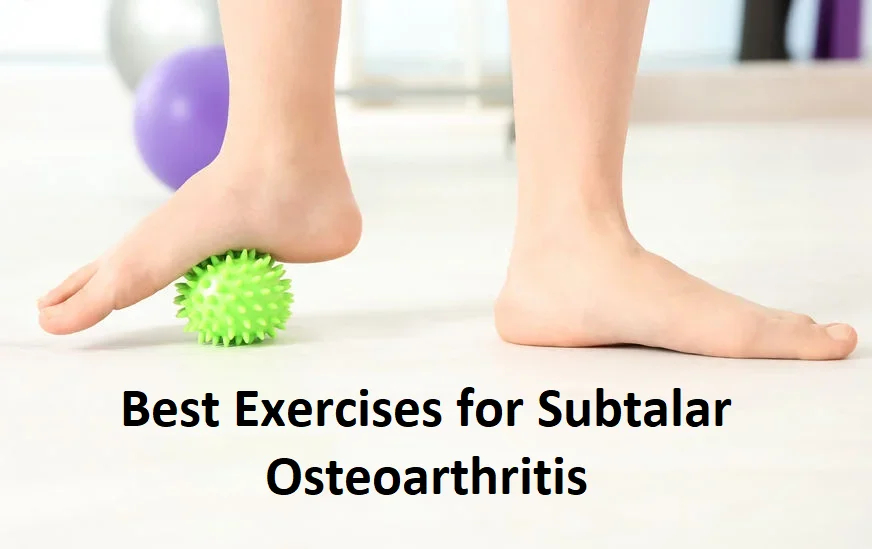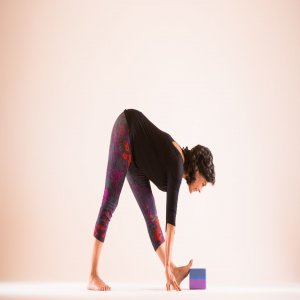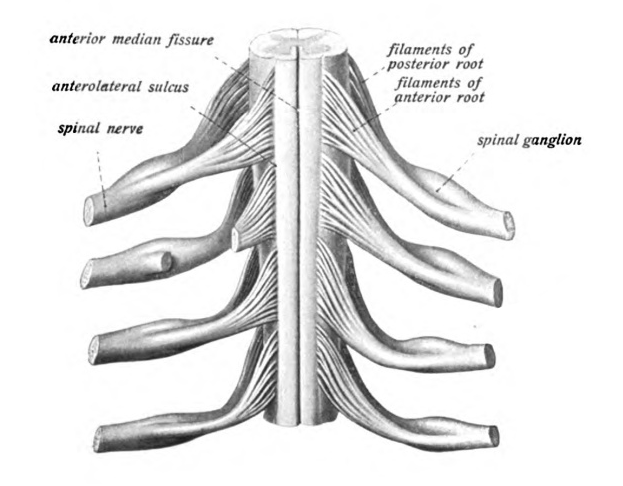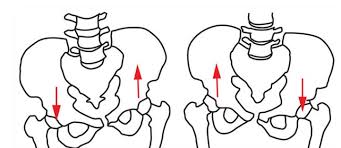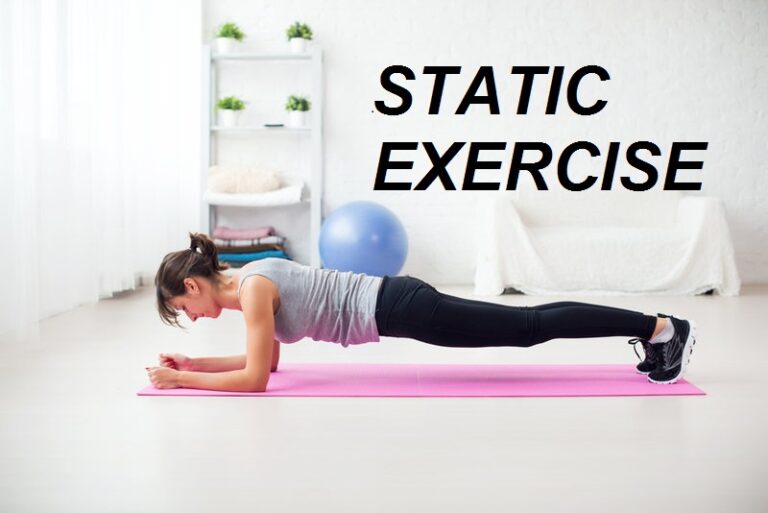24 Best Exercises for Subtalar Osteoarthritis
Exercises for Subtalar Osteoarthritis is an important part of your overall treatment program along with pain medication and Physiotherapy Treatment.
Introduction:
Subtalar arthritis causes pain in the hindfoot that aggravates by standing and walking, especially on rough surfaces. It is most likely connected with stiffness when moving the foot from side to side. A past injury, usually a calcaneal fracture or improper alignment of the repaired bone, is the most common cause of subtalar arthritis.
Osteoarthritis affects cartilage degeneration, resulting in pain and swelling, and may occasionally lead to bones rubbing against each other as we move. Osteoarthritis not only damages the cartilage, but it may also affect the bones, ligaments, tendons, and muscles.
It’s critical to stay active if you have osteoarthritis. You may be concerned that exercising may aggravate your symptoms, but it will actually help your condition by strengthening your muscles and tendons and nourishing your cartilage.
There are three forms of exercise you should try to do: Stretching exercises can assist in maintaining and enhancing range of motion. your joints’ Mobility and strengthening exercises – These exercises help to maintain your muscles and joints strong and supportive. Aerobic/fitness exercises are any exercises that raise your heart rate.
An exercise training program will help you return to regular activities and live a more active, healthy lifestyle after an injury or surgery. A well-structured conditioning program will also assist you in returning to sports and other hobbies. Exercises that strengthen the muscles that support your lower leg, foot, and ankle will help maintain your ankle joint healthy.
Keeping these muscles strong will help relieve foot and ankle stiffness and prevent additional injury. You should stretch your muscles. Strengthening is essential for restoring range of motion and avoiding injury. Stretching lightly after strengthening workouts can help decrease muscle discomfort and keep your muscles long and flexible during recreational activities.
Unless otherwise directed by your doctor or physical therapist, this foot and ankle conditioning program should be continued for 4 to 6 weeks. Following your recuperation, you can continue with these exercises as a maintenance program for the long-term health of your feet and lower legs. Performing the exercises five to ten times per week can help you maintain your strength and range of motion. Your foot and ankle should move.
Exercise can help with subtalar osteoarthritis in the following ways:
Following are a few of the positive advantages of regular workout sessions:
- Muscle relaxation
- Reduce annoyance
- Improve your mobility.
- Enhance your adaptability.
- It contributes to the strengthening of weak muscles.
- Any tenseness or tightness should be released.
- Improve your balance.
- Extend your range of motion.
The best subtalar osteoarthritis exercise is:
The following are some of the finest exercises for subtalar osteoarthritis,
Seated foot stretch
- Cross the affected heel across the opposing leg while sitting on a chair.
- To build tension in the arch of the foot, pull the toes towards the shin.
- To check for tension in the plantar fascia, place the other hand on the bottom of the foot.
- Maintain this posture for a few seconds.
- Return to your neutral position after that.
- Then relax.
- Repeat the movement with the other leg.
- Repeat 5-10 times a day.

Wall push
- Start with relaxing standing face a wall.
- By putting your toes into the wall, you might try to push it away.
- Your calf muscles should start to contract.
- Hold for a few seconds.
- Return to your neutral position after that.
- Then relax.
- Repeat with the other leg.
- Repeat 5-10 times per day.
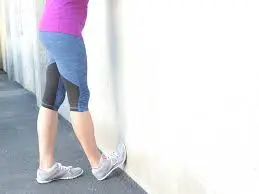
Ankle circles
- Under your ankle, use a rolled towel or foam roller.
- Slowly turn your ankle in circles, 10 clockwise and 10 anticlockwise.
- Move only your foot and ankle, not your entire leg.
- Change up the stretch by tracing the alphabet with your big toe.
- Return to your neutral position after that.
- Then relax.
- Repeat 5-10 times per day.
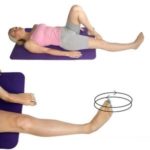
Standing heel lifts
- Stand with your feet about shoulder-width apart.
- Get a chair or a wall close in case you require assistance.
- Put your weight on the balls of your feet by raising your heels off the ground.
- Slowly lower your heels to the floor.
- Return to your neutral position after that.
- Then relax.
- Control is important for strengthening your muscles.
- Repeat 5-10 times per day.
- Holding free weights while lifting your heels adds resistance to this exercise.
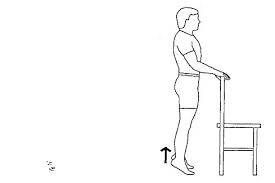
Towel pickup
- As you sit, put a little towel on the floor in front of you.
- Keep your feet flat on the ground.
- Grab the towel’s center with your facing toes and snuggle it.
- Return to your neutral position after that.
- Then relax.
- Repeat with the opposite foot.
- Repeat this movement 5-10 times.

Single-foot heel raise
- Start with the one-leg standing.
- On your toes, raise with a chair or wall support.
- Hold for a few seconds.
- Then slowly drop.
- Return to your neutral position after that.
- Then relax.
- Repeat 5-10 times daily in a day.
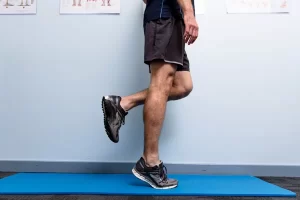
Assisted-toe-spread
- Place your feet flat on the floor.
- Lift your toes, attempting to make them all the same height.
- For strengthening you can use lightweight objects.
- Spread your toes as widely apart as possible while they’re elevated
- Hold for 5 seconds.
- Relaxedly bring your toes back down.
- Return to your neutral position after that.
- Then relax.
- Repeat 5-10 times on each foot.
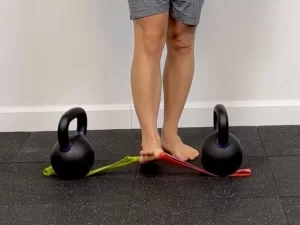
Ankle out
- Build a loop with an elastic exercise band and hold it in place with the leg of a table or chair, or your other foot.
- Place one foot in the loop.
- Turn your toes outwards against the resistance of the band as you maintain your heel firm on the ground.
- Bring your foot back to the original position slowly.
- Return to your neutral position after that.
- Then relax.
- Repeat 5-10 times daily in a day.
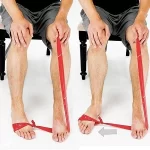
Ankle Pumps
- Start with a relaxed sit on the ground.
- Point your toes away from your ankle.
- Hold for a few seconds.
- Pull your toes toward your ankle.
- Hold for a few seconds.
- Then return to your neutral position.
- Then relax.
- Repeat 5-10 times a day.
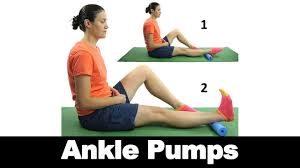
Resisted Ankle Dorsiflexion
- Straighten one knee while seated in a chair with your feet flat on the floor.
- Make a loop out of a resistance band then secure it with a heavy, robust object or a closed door. (Alternatively, you may ask someone to hold a resistance band for you.)
- The top of the foot of the affected ankle should be wrapped in a loop.
- While maintaining a straight knee and leg, slowly flex your ankle by bringing your toes up towards it.
- After a brief period of holding this position, carefully bring your ankle back to its original position
- Return to your neutral position after that.
- Then relax.
- Repeat 5-10 times daily in a day.
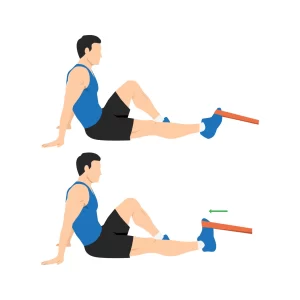
Heel Cord Stretch
- Face a wall while facing forward with your unaffected leg in front of you and your knee slightly bent.
- The heel is flat and the toes are slightly turned inward on the affected leg, which is straight behind you.
- Put your hips forward and towards the wall while keeping both heels flat on the floor.
- Hold on to this stretch for a short while.
- After that, revert to your neutral position.
- Then relax.
- Repeat every day up five to ten times.
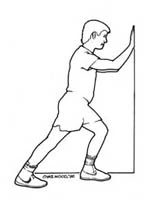
Towel Stretch
- Sit on the ground with your feet spread out in front of you.
- Holding the towel’s ends in your hands, wrap it around the affected foot’s ball.
- Keep your injured leg straight and pull the towel towards you.
- Hold the position for a few seconds.
- After that, revert to your neutral position.
- Then relax.
- The other leg, and repeat this.
- Repeat daily 5–10 times.
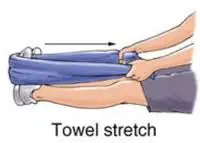
Toe Salutes
- Place your feet flat on the floor and take a seat in a chair.
- While keeping the other four toes planted on the ground, lift your big toe.
- Hold the position for a few seconds.
- After that, revert to your neutral position.
- Then relax.
- While maintaining the big toe on the floor, raise all four of your toes at once.
- Hold the position for a few seconds.
- After that, revert to your neutral position.
- Then relax.
- Repeat daily 5–10 times.
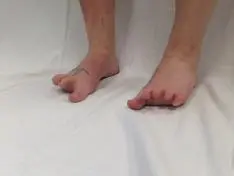
Toe Splaying
- Place your feet flat on the floor and take a seat in a chair.
- Your toes should be as far apart as is comfortable.
- Hold the position for a few seconds.
- After that, revert to your neutral position.
- Then relax.
- Repeat daily 5–10 times.
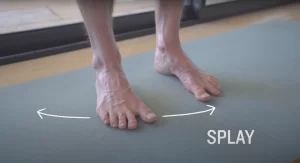
Toe Extension
- Put your feet flat on the floor and take a seat in a chair.
- Place one foot on the other thigh by picking it up.
- With one hand, cling to your heel.
- With the other hand, grab your toes and flex them in the direction of your ankle.
- Hold the position for a few seconds.
- Back towards your heel, then hold for a brief period of time.
- Keep your motions smooth and soft.
- After that, revert to your neutral position.
- Then relax.
- Repeat daily 5–10 times.
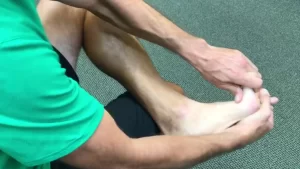
Standing calf stretch
- Put your hands on the wall with your back to it, around eye level.
- Keep your heel on the ground and maintain the position of your injured leg.
- Knee bent, keep the opposing leg forward.
- As if you were pigeon-toed, gently invert your back foot.
- Gradually lean in until your calf starts to lightly stretch.
- For 15 to 30 seconds, hold.
- Retrace your steps to the beginning.
- Then relax.
- Five to ten times a day, perform this workout.

Marble pick up
- Place your feet flat on the floor.
- Place two empty bowls on the floor in front of you, one with 10 to 20 marbles.
- Using one foot’s toes, move each stone to the empty bowl.
- Repeat with the opposite foot.
- Return to your original starting place.
- Then relax.
- Every day, do this workout 5-10 times.
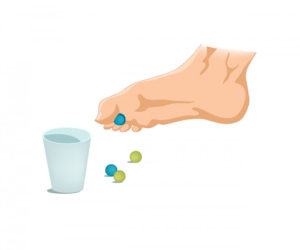
Toe Flexion
- Long sit on the floor or in a chair to begin.
- Place your foot such that the toes are unrestricted and the heels are flat on the ground.
- Then, just alternate between flexing and extending the toes in each direction as far as is comfortable.
- Cling to this position for a short while.
- Return to your neutral stance after that.
- Then relax.
- Five to ten times every day, repeat this workout.
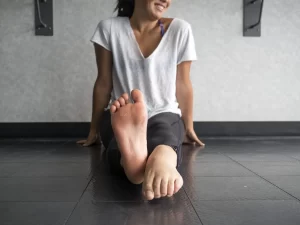
Single Leg Balance
- For support and safety, stand close to a chair, wall, or counter.
- Put the leg you’ll be utilizing for balance on the surface of your choice.
- Lift the opposite leg off the ground as you shift all of your weight into your own.
- As you find your balance, pay attention to maintaining a firm abdominal core and a steady leg.
- For a brief while, maintain this posture.
- Then take a position that is neutral.
- Then relax.
- Follow with the other leg.
- Five to ten times a day, repeat this exercise.
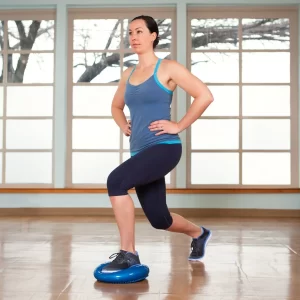
Seated calf stretch
- Sit on the ground with your legs extended.
- Holding both sides of a resistance band (or other tool) in your hands, wrap it around one foot.
- To feel the stretch in your calf, slowly bring your toes up towards your shin.
- Hang on to this position for a little while.
- Then take a position that is neutral.
- Then relax.
- On the opposite side, repeat.
- Five to ten times, repeat this workout.
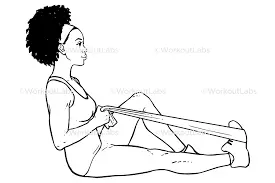
Big toe stretch
- Take a comfortable seat on the bed or table to begin.
- Grab your instep with one hand, and your big toe with the other’s fingers.
- Stretch it gently for five seconds each in the up, down, and side directions.
- For a little while, maintain this position for your body.
- Then adopt an impartial stance.
- Then relax.
- Repeat on the other side.
- Repeat the exercise five to 10 times.
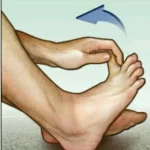
The ball roll
- Starts with where you are sitting.
- Put a rubber racquetball or a golf ball on the ground near to your feet.
- Roll one foot from the heel through the instep to the toes as you place it on the ball.
- Every fifteen seconds, switch feet.
- Then take a position that is neutral.
- Then relax.
- 5–10 times each day, repeat.

Resisted Ankle Eversion
- Seated on the ground with your legs outstretched.
- A resistance band’s loose ends should be held in your hand.
- To keep your lower leg supported and your heel off the floor, roll up a towel.
- Insert the foot of the injured ankle into the resistance band’s loop while pressing the other foot against it.
- Press away from your other foot with the foot in the loop’s outside edge.
- When exercising, make sure to twist at your ankle rather than your leg, keeping your knee facing upward.
- For a little while, maintain this position for your body.
- Then take a neutral posture.
- Then unwind.
- On the opposite side, repeat.
- Repeat 5-10 times a day.
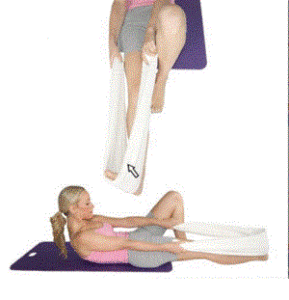
Resisted Ankle Inversion
- The legs out in front of you while you sit on the floor.
- Your injured ankle’s foot should be inserted into the resistance band’s loop as you hold the loose ends in your hands.
- Put your other foot behind the ball of your affected foot, allowing the resistance band to wrap around it.
- Press your foot against the resistance band with the inside of the affected foot to make it migrate away from your other foot.
- In order for your ankle to move, try to keep the remainder of your leg straight.
- Once you’ve held it in place for a few seconds, move it back to the starting position.
- Then take a neutral posture.
- Then unwind.
- On the opposite side, repeat.
- Repeat 5-10 times a day.
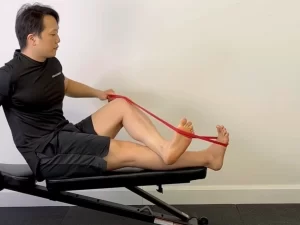
What safety measures are necessary when exercising?
- Before working out, warm up by gently stretching.
- While performing the exercise, ensure your back is straight.
- Prevent rigorous physical activity
- Stop exercising if you get sudden pain.
- Between exercises, rest.
- Remain hydrated.
When do you stop working out?
- Severe muscular ache
- You’re contagious.
- If there is any discomfort or numbness.
- Headache
- Fever
Which physical activities or exercises should someone with subtalar osteoarthritis avoid?
- Activities that exert too much stress on the joints may need to be avoided.
- Sudden a pause.
- Running in erratic terrain.
- Traumatic sports.
- Transferring hefty things.
- Putting on heels.
- Don’t go running.
- Prevent jumping.
- Sporting event.
- Avoid stretching and exercise that are repeated and increase joint pressure.
FAQS
What easy exercises can you do at home to treat subtalar osteoarthritis?
Seated foot stretch
Sitting plantar fascia stretch
Ankle circles
Standing heel lifts
Towel pickup
Single-foot heel raise
Approximately how long does it take the subtalar joint to recover?
You might be permitted to start putting weight on your foot when the fusion becomes stronger. To learn to walk without a limp, you might need to work with a physiotherapist. Before getting back to your regular activities, give yourself at least 10 to 12 weeks to heal.
What is the best treatment for osteoarthritis in the ankle?
To relieve pressure on the ankle, lose weight. To avoid the activities that hurt the most, switch them up. Visit a physical therapist. Use a cane, a brace, or shoe inserts.
Does exercising help subtalar osteoarthritis get better?
Exercise is regularly used to reduce pain, stop further agony, and prevent harm.
Exercises that strengthen the body’s supporting muscles include stretches.
Regular exercise can assist in reducing the frequency of recurrent discomfort.
Exactly how frequently would someone with osteoarthritis of the subtalar joint work out?
The exercises can be done for at least 30 to 40 minutes each day.
You will benefit from a daily regimen of gentle stretching and exercise.
What are the most effective exercises for relieving pain from subtalar osteoarthritis?
Toe Splaying
Toe Salutes
Toe spread
Ankle out
Basic balance
Is it possible to entirely recover from osteoarthritis?
Even though osteoarthritis is a chronic condition for which there is no cure, it doesn’t always become worse with time—in some situations, it even improves. A variety of treatments are also available to decrease the symptoms. Sometimes, modest symptoms can be treated with straightforward methods like regular exercise.
How does subtalar osteoarthritis manifest?
The subtalar joint, which is the joint in the backfoot that is situated below the ankle joint, is impacted by a type of arthritis known as subtalar arthritis. The ailment is characterized by uncomfortable hindfoot pain, which is exacerbated by standing and walking, especially on uneven ground.

